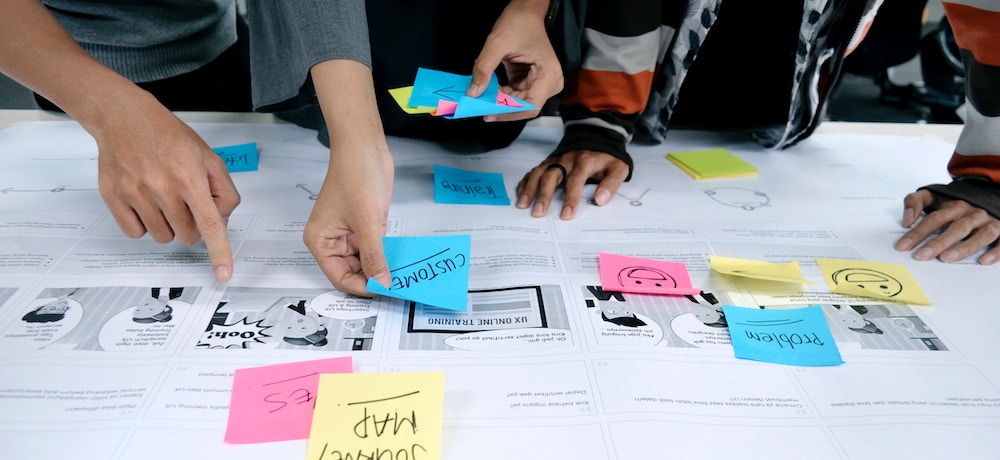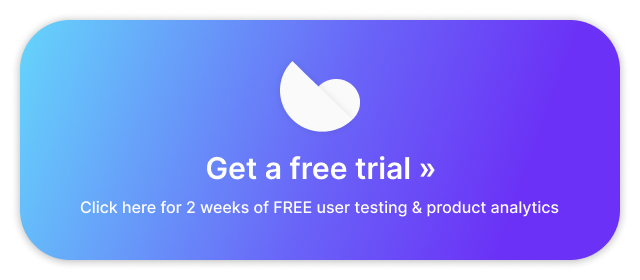In the world of UX design, the terms “user research” and “user testing” are often used interchangeably, leading to confusion and misconceptions. While they share a common goal of improving the user experience, it’s important to recognize the distinctions between these two methodologies.
User experience research encompasses a broader set of methods and research tools aimed at understanding users’ behaviors, motivations, and needs. On the other hand, user testing is a specific branch of user research focused on evaluating the usability of a product or service through scenario-based feedback sessions.
Throughout this article, we will explore the intricacies of user research and user testing, uncovering their unique contributions to the UX design process. By understanding the distinctions between these methodologies and recognizing their respective strengths, designers can effectively leverage both user research and user testing to create exceptional, user-friendly experiences.
User research: Uncovering user behaviors and needs
User research or UX research is a comprehensive process of gathering information and insights about users, their behaviors, motivations, and preferences. It focuses on understanding the target audience to create products that address their specific needs effectively.
Read more: Guide to behavioral analytics
The primary goal of user research is to gain deep empathy with users, guiding the design process and informing decision-making. This is done especially in the early stages of the development process, but may be continued at multiple later stages as well.

User research methods
Below are some (but not all) of the major methods that comprise user research. Remember that there is not an exact, limited number of user research methods – your context and goals can lead to a wide variety of approaches, and every method can be further expanded upon and divided up. There is also overlap between many of these methods.
You shouldn’t think of the following list as a precise and exhaustive list of techniques to choose from, but rather a sample of possible methods to inspire the proper approach for your research project.
- Qualitative interviews: One common method used in user research for gathering qualitative data is the user interview. Through one-on-one or in-person group interviews, researchers engage directly with users, asking questions about their experiences, needs, preferences, and pain points. This type of qualitative research provides valuable insights into users’ perspectives, and allows you to understand their needs on a deeper level.
Overlaps with: Focus groups, moderated user testing - Surveys & questionnaires: Another effective way to collect data in user research is by running surveys. By administering structured sets of questions to a larger sample size of users, researchers can gather quantitative data and broader insights. This type of quantitative research provides a systematic approach to understanding user opinions, preferences, and trends, which helps identify patterns and make data-driven decisions.
Overlaps with: User testing, card sorting - Observational studies: These are a direct means of understanding users’ behaviors and interactions with products or services. By observing real users in their natural environments, designers can gain insights into how they engage with a product, identify challenges they face, and uncover opportunities for improvement. This method provides contextual information that enhances the understanding of user needs and preferences.
Overlaps with: Ethnographic studies, behavioral analytics - Diary studies: Diary studies involve participants recording their experiences, thoughts, and interactions over an extended period. Users document their activities, challenges, and opinions in a diary or through digital means. Diary studies provide longitudinal insights and capture the user’s context and emotions in real-time.
Overlaps with: Unmoderated user testing, longitudinal studies - User testing: Also called usability testing, this method has participants replicate a realistic user session on a digital product, attempting to perform various tasks assigned by the researcher. It typically involves think-aloud protocols, wherein users vocalize their thoughts and feedback during and throughout the session. User testing allows researchers to observe how users behave and interact with a platform in specific use cases.
Overlaps with: Qualitative interviews, A/B testing
Objectives of user research
The primary objectives of doing user research are:
- Understanding user needs, goals, and motivations to provide a deep understanding of what users truly value.
- Identifying pain points and areas for improvement to ensure that design solutions effectively address user challenges.
- Developing user personas and areas for improvement to guide the design process, which serve as a foundation for design decisions and user experience strategies.
- Informing design decisions and product strategies to enhance the chances of creating successful, user-centered designs that meet users’ needs and expectations.

User testing: Identifying design flaws and improving user experience
User testing (or usability testing) focuses on evaluating a product or service by observing how users interact with it. In this research method, prototypes or functional platforms are evaluated with representative users.
It often happens towards the end of the product development process, but can be done at any time in the process for increased understanding. It aims to discover usability and functionality issues, measure user satisfaction, and improve the overall user experience.
Read more: What is user acceptance testing?
The main elements of user testing
There are a variety of approaches for doing user testing: remote, on-site, moderated, unmoderated. Every method has some of its own unique elements and advantages. However, the list below reflects some of the common aspects of almost all kinds of user testing.
- Task-based testing: User testing is typically task-based. In other words, each user testing session follows a list of instructions, or “tasks,” for the participant to complete. These may be steps such as creating an account, searching for information, or comparing products. A task-based test structure allows the researcher to focus on collecting UX feedback on very specific, defined sections of the user flow that they are trying to understand and improve.
Read more: How to write usability testing tasks
- Thinking aloud: All user testing methods rely heavily on spoken feedback from the users. Test participants are encouraged to verbalize their thoughts, feelings, and decision-making processes as they use the product and perform tasks. This approach provides valuable insights into users’ cognitive processes, allowing researchers to understand the reasoning – the “why” – behind their actions, frustrations, and preferences. Thinking aloud helps uncover hidden usability issues and provides a deeper understanding of users’ mental models and expectations.
- Video recording: User testing sessions are always recorded (including the users’ voice as well as their device screen), so that the researcher can reference back to the video and see exactly how they interacted with the product. In some cases, such as remote unmoderated user testing, the video recording is the primary way of receiving feedback. In moderated testing, on the other hand, the researcher is present during the session, so the video serves more as a backup to refer back to for clarification.
- Usability scores: User tests are primarily performed to collect qualitative UX feedback. However, researchers often do include some quantitative metrics as part of a user testing study. These may be task-based scores like the SEQ, or measurements like completion rates or time-on-task. They may also be overall scores such as the SUS, PSSUQ, or SUPR-Q. Quantitative usability metrics are a great way to get more out of a user testing study, and can aid in the analytical process as well.
- Survey responses: A follow-up survey is not a required part of a user test, but they are frequently included as a way to get some quick key insights. Many researchers like to include post-test survey questions as a way to gauge users’ overall perceptions and feelings about the experience after they’ve finished, and see what aspects and problems stood out most in their minds. User testing follow-up surveys can also be a great way to get some quick metrics on points of interest as well.
Objectives of user testing
The primary objectives of doing user testing are:
- Identifying usability issues and obstacles in the user flow.
- Gathering feedback on the overall user experience.
- Measuring user satisfaction and task success rates.
- Validating design decisions and making data-driven improvements.
The synergy of user research & user testing
When user research and user testing are combined, designers gain a more comprehensive understanding of their users and can refine their designs accordingly. User research provides the foundation of insights that inform the design process, while user testing validates and fine-tunes those design decisions based on real user feedback. By integrating the findings from these methodologies, designers can bridge the gap between user expectations and the actual user experience.
Ultimately, the synergy between user research and user testing allows designers to create products and services that align with users’ needs, motivations, and behaviors. It enables them to make informed design decisions, optimize usability, and deliver exceptional user experiences.
By embracing both user research and user testing, designers can ensure that their designs are not only visually appealing but also intuitive, efficient, and tailored to the users they aim to serve.
Why digital products can’t live without it
User research and user testing are essential components of the UX design process, contributing to the creation of meaningful and valuable user experiences. While these methodologies require time and planning, they are far more cost-effective than dealing with design flaws and user dissatisfaction later on.
Incorporating user research and user testing in the UX design process brings designers closer to achieving a beautiful user experience that aligns with user needs and expectations.





